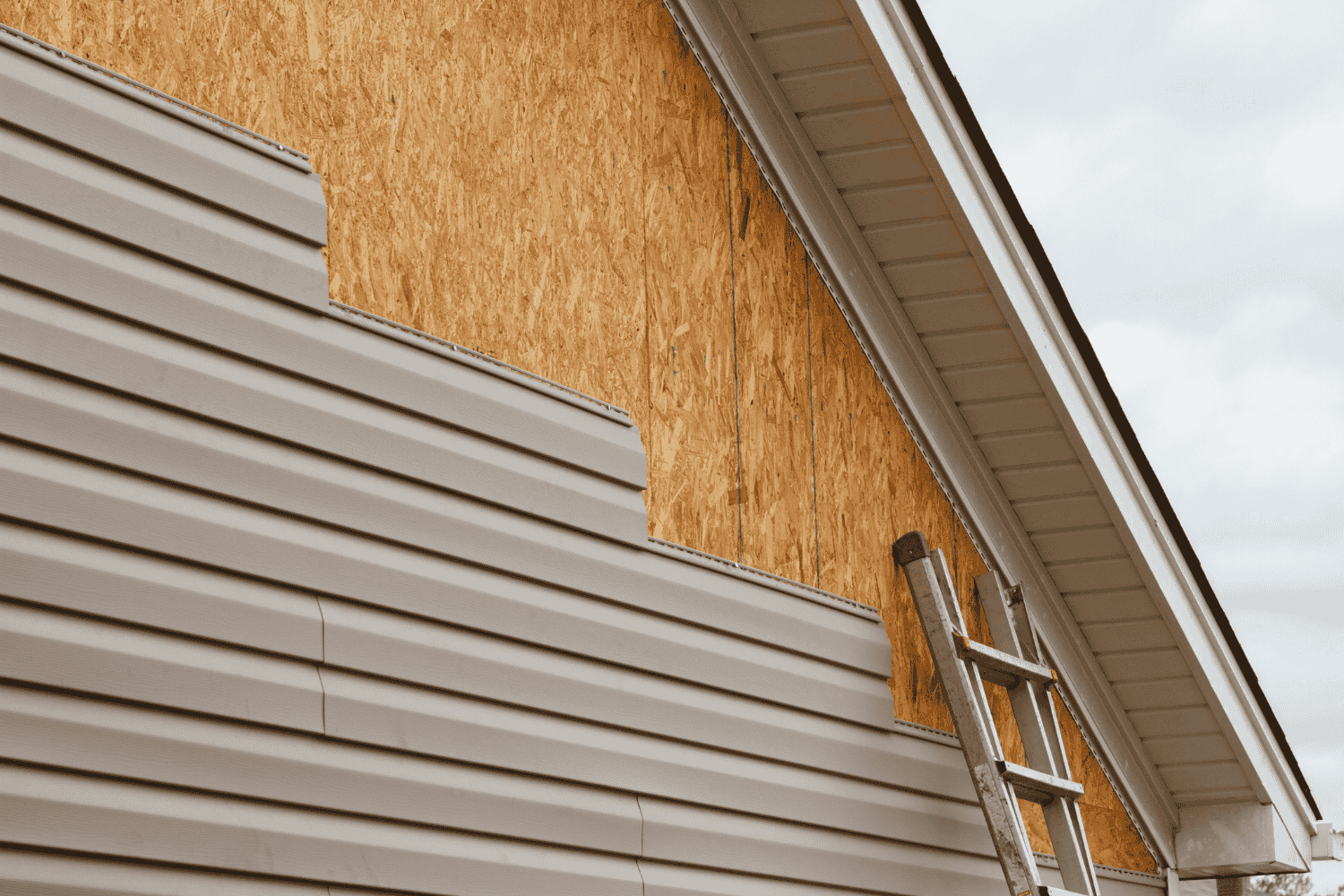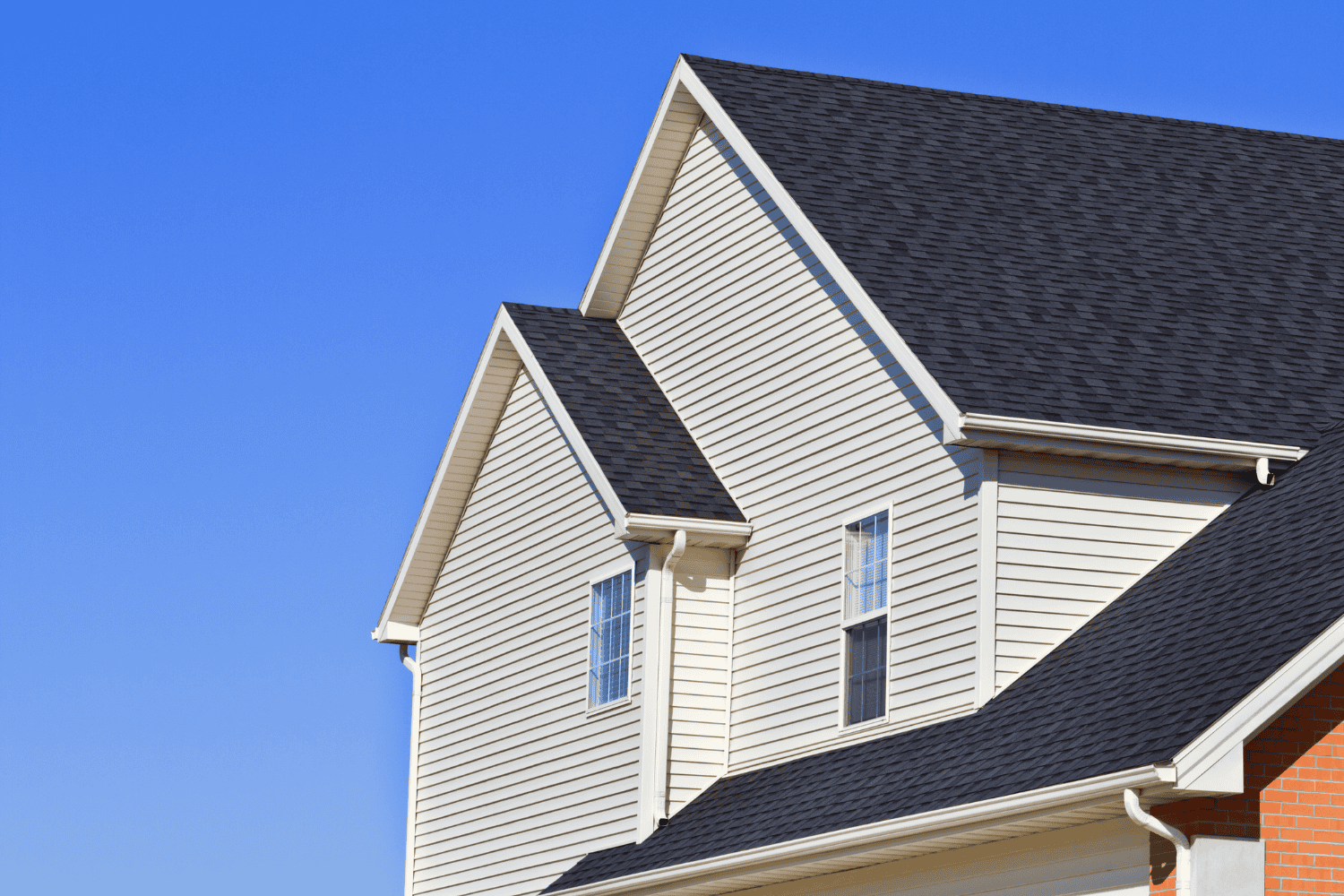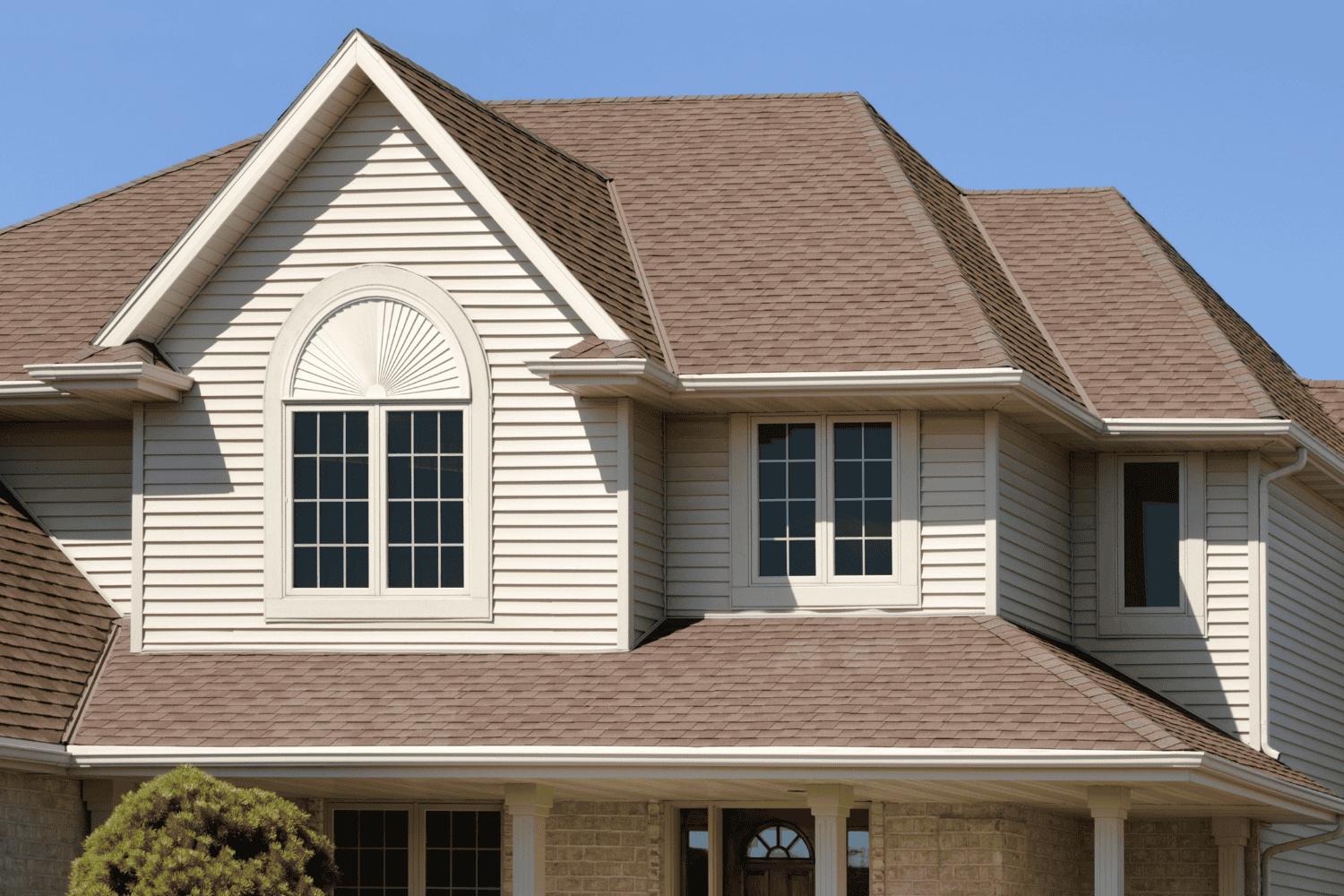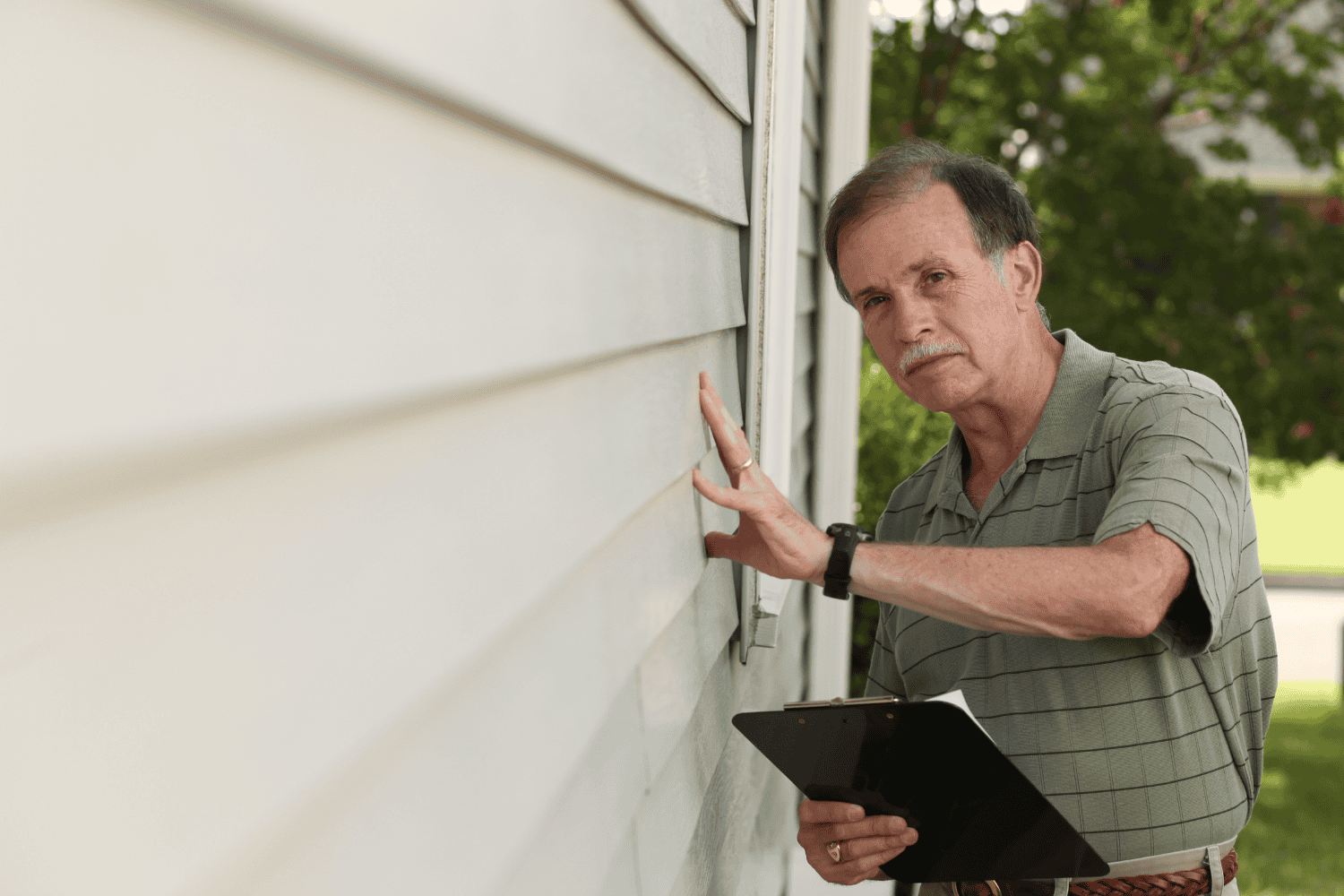Does Vinyl Siding Expand and Contract?
Yes, vinyl siding does expand and contract. Temperature changes cause vinyl siding to grow in warmer weather and shrink in colder seasons. This natural movement can affect the siding’s performance if not properly considered during installation. In this article, we cover how temperature variations impact vinyl siding, the importance of proper installation techniques, and tips for maintaining your siding throughout the year.
Key Takeaways
-
Vinyl siding experiences significant thermal expansion and contraction, requiring careful installation to prevent issues like buckling and warping.
-
Proper fastening methods and ample spacing between panels during installation are crucial for accommodating vinyl siding’s natural movement due to temperature fluctuations.
-
Insulated vinyl siding can mitigate expansion-related problems, enhance energy efficiency, and improve the overall durability of your home’s exterior.
Understanding Thermal Expansion in Vinyl Siding

Thermal expansion is the tendency of materials to change shape, area, and volume. This change occurs in response to variations in temperature. Vinyl siding, being no exception, is particularly susceptible to this phenomenon. When temperatures rise, the vinyl expands; as temperatures drop, it contracts. This constant movement can significantly impact the longevity and performance of your siding if not properly accounted for during installation.
Vinyl siding, made from polyvinyl chloride (PVC), can experience expansion and contraction of up to half an inch over a 12-foot length due to temperature changes. While PVC is durable, it becomes brittle and less flexible in colder temperatures, making it crucial to understand how to manage these changes effectively during installation.
How Temperature Changes Affect Vinyl Siding
Temperature fluctuations can cause vinyl siding to expand or contract significantly. For instance, a 12-foot piece of vinyl siding can expand up to 12 inches in a year due to temperature changes. The rate of thermal expansion for vinyl siding during a 50°F temperature change is between 0.3% to 0.4%. This means that even minor temperature shifts can lead to noticeable changes in the siding’s dimensions.
Gently tugging on overlapping pieces to check for side-to-side movement can confirm that your siding has room for thermal expansion. If there’s no movement, it could indicate that the siding was installed too tightly, which can lead to buckling or warping as the material tries to expand and contract.
Installation Techniques to Accommodate Expansion and Contraction

Accommodating the natural expansion and contraction of vinyl siding requires proper installation. Key components include keeping the siding straight and level and allowing room for thermal movement. A flat, level wall surface is necessary to ensure that the siding can expand and contract without causing damage.
Successful installation requires meticulous planning and adherence to specific techniques. Key techniques involve using the correct fasteners and ensuring adequate space between panels. An experienced installer can prevent common issues like buckling and warping when systems are installed properly.
Before installing, applying a water-resistive barrier and using smooth, flat sheathing surfaces can also help achieve proper installation.
Proper Fastening Methods
Fastening vinyl siding correctly is essential to accommodate its expansion and contraction. Nails or screws are typically used, with staples permitted depending on local building codes. Fasteners should penetrate at least 1 1/4 inches into the wood framing to ensure stability, including the use of a nail head for added support. If you want to enhance your home’s exterior, consider how to install vinyl siding effectively.
When using staples, checking local building codes and wind load design pressure ratings is crucial to ensure compliance. Improper fastening, especially in high temperatures, can lead to issues like buckling or misalignment. Therefore, it’s essential to follow proper installation guidelines to maintain the siding’s integrity.
Importance of Leaving Space
Adequate space between vinyl siding panels allows for thermal movement. Proper spacing ensures that the siding can expand and contract freely without causing buckling or warping.
To check if there’s enough room for movement, gently pull on overlapping pieces. If they move slightly, there’s sufficient space for expansion and contraction. Adequate room around the fastener head helps prevent issues related to tightness and misalignment.
Common Problems Due to Improper Installation
Numerous issues, such as warping, buckling, and cracking, can result from improper vinyl siding installation. These problems often arise from nailing boards too tightly or failing to leave adequate space for thermal movement. Extreme temperature fluctuations can exacerbate these issues, particularly if the siding was installed without accounting for expansion and contraction.
Direct sunlight during the summer months can cause vinyl siding to warp or buckle, especially if it cannot grow due to improper installation. Cold weather, on the other hand, can make vinyl brittle and more susceptible to breakage during installation. Proper installation practices are vital to avoid these common problems.
The Role of Insulated Siding in Reducing Expansion Issues

Insulated siding, which includes solid-ridge foam backing, plays a significant role in mitigating expansion-related problems. This foam backing enhances heat insulation, reducing the amount of thermal movement the siding undergoes. Insulated vinyl siding is also effective at preventing energy loss, contributing to overall energy efficiency.
By providing a more stable structure, insulated siding reduces the likelihood of warping and buckling caused by temperature fluctuations. This makes it an excellent choice for homeowners looking to improve their home’s durability and energy efficiency.
Seasonal Considerations for Vinyl Siding Installation

The timing of vinyl siding installation can significantly impact its performance. The ideal temperature range for installation is between 40°F and 90°F to ensure proper fitting and flexibility. Extreme cold can make vinyl brittle, complicating the installation process.
Installing siding on clear days with no rain forecasted prevents moisture-related issues. During hot days, installing siding in the cooler morning or evening hours can help prevent warping. Contractors often offer lower rates during winter months, making it a more affordable option despite the challenges.
Summer Installation Tips
Installing vinyl siding during the summer requires special considerations due to high temperatures. The ideal temperature range for installation is between 50 and 75 degrees Fahrenheit, as this maintains the material’s flexibility.
High temperatures can cause the siding to warp or stretch, so it’s best to install it during cooler parts of the day, such as early morning or late evening. Avoiding direct sunlight and ensuring proper ventilation during installation can also help mitigate heat-related issues.
Winter Installation Tips
Winter installations come with their own set of challenges, but with the right techniques, they can be successful. For winter installation, insulated vinyl siding is ideal due to its better protection against cold-related issues.
During winter installation, cutting panels slightly longer accommodates shrinkage from temperature drops. Fasteners should not be driven too tightly against the siding to prevent buckling.
While some contractors offer discounts for winter installations, it’s important to consider the potential for longer project timelines due to shorter daylight hours.
Choosing the Right Siding Material

Selecting the right siding material is crucial for your home’s durability and energy efficiency. Vinyl siding and fiber cement siding are among the most popular options on the market today. Uninsulated vinyl siding offers less efficient insulation compared to insulated options.
Insulated siding provides better energy conservation, particularly during winter, leading to improved interior comfort and reduced energy bills. Considering the benefits of insulated siding can enhance your home’s performance when choosing materials.
Ensuring Proper Maintenance
Ensuring the longevity of your vinyl siding requires proper maintenance. Insulated siding is designed to prevent moisture absorption, reducing the risk of moisture damage, mold, and mildew. Regular cleaning with mild detergent and a soft brush can prevent moisture accumulation and mold growth.
Applying weatherproof caulking around openings helps to keep moisture out and reduces the risk of cracking in cold temperatures. Professional evaluations can uncover vulnerabilities that homeowners might miss, ensuring your siding remains in top condition.
Summary
In summary, understanding the nuances of vinyl siding installation can save homeowners from potential problems down the line. Proper installation techniques, including correct fastening methods and leaving adequate space, are crucial for accommodating thermal expansion and contraction. Insulated siding offers additional benefits, including improved energy efficiency and reduced expansion issues.
By considering seasonal factors and ensuring regular maintenance, homeowners can extend the life of their vinyl siding. At Arocon Roofing and Construction, we’re dedicated to providing expert guidance and services to ensure your home’s exterior remains in excellent condition. Take the necessary steps today to protect your investment and enjoy the benefits of well-installed vinyl siding.
Frequently Asked Questions
What is the downside of vinyl siding?
Vinyl siding can be easily dented, may fade in color, and can crack in extremely cold weather. Additionally, replacing individual panels can be challenging, making it essential to consider these drawbacks when choosing siding for your home.
What is the expansion gap for vinyl siding?
The expansion gap for vinyl siding should be 1/4” (6.4mm) between the siding and corner posts or channels, increasing to 3/8” (9.5mm) if installed in temperatures below 40° F (4.4° C). Proper spacing is essential for accommodating expansion and contraction.
What are the benefits of insulated vinyl siding?
Insulated vinyl siding enhances energy efficiency by reducing heat loss and minimizing thermal movement, which also contributes to improved durability. This makes it a smart investment for your home.
When is the best time to install vinyl siding?
The best time to install vinyl siding is during clear weather when temperatures are between 40°F and 90°F, ensuring optimal conditions for a successful installation.
How can I maintain my vinyl siding to ensure its longevity?
To ensure the longevity of your vinyl siding, regularly clean it with mild detergent, apply weatherproof caulking around openings, and schedule professional evaluations. This proactive maintenance prevents moisture damage and mold growth, keeping your siding in great condition.



